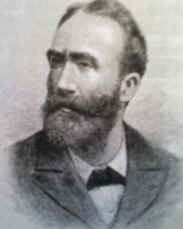John O'Connor (painter) facts for kids
John O'Connor (born August 12, 1830 – died May 23, 1889) was a talented Irish painter. He was especially known for his amazing scene paintings for theaters and his detailed drawings of important royal events.
Contents
Early Life and Family
John O'Connor was born in 1830 in County Londonderry. When he was just twelve years old, he became an orphan. Luckily, his uncle, who managed theaters in Belfast and Liverpool, helped him out. John started working at the Belfast theater as a call-boy, which meant he would call actors to the stage. He also helped with painting the scenery for plays. This was his first step into the world of art and theater.
John O'Connor got married twice. His first wife was Ann Butler Fairburn, and they had two sons, Francis and John Peter. After Ann passed away, John married her half-sister, Ellen Fairburn. They also had two sons, Henry and Joseph William. John O'Connor's health began to decline in 1888, and he passed away in 1889.
Painting Career and Achievements
John O'Connor became a very skilled painter. In 1848, he started working at the famous Drury Lane Theatre in London. By 1863, he was the main scene painter at the Haymarket Theatre.
Scene Painting for Operas
John O'Connor was so good at his job that he was asked to create the London scenery for a new opera by Gilbert and Sullivan called The Pirates of Penzance in 1879. His work was highly praised, and he was then asked to design the scenery for their next opera, Patience.
Exhibitions and Royal Art
John O'Connor started showing his paintings at the Society of British Artists in 1854. He also exhibited his art at the Royal Academy from 1857 until 1888. During this time, the Royal family noticed his talent. He created many important drawings of royal events, such as:
- The marriage of Princess Louise in 1871.
- A special Thanksgiving Service at St Paul's in 1872.
- The arrival of the Duke and Duchess of Edinburgh at Buckingham Palace in 1874.
- The Jubilee Service at Westminster Abbey in 1887.
He also showed his work at other places, including the Royal Watercolour Society and the Royal Hibernian Academy.



